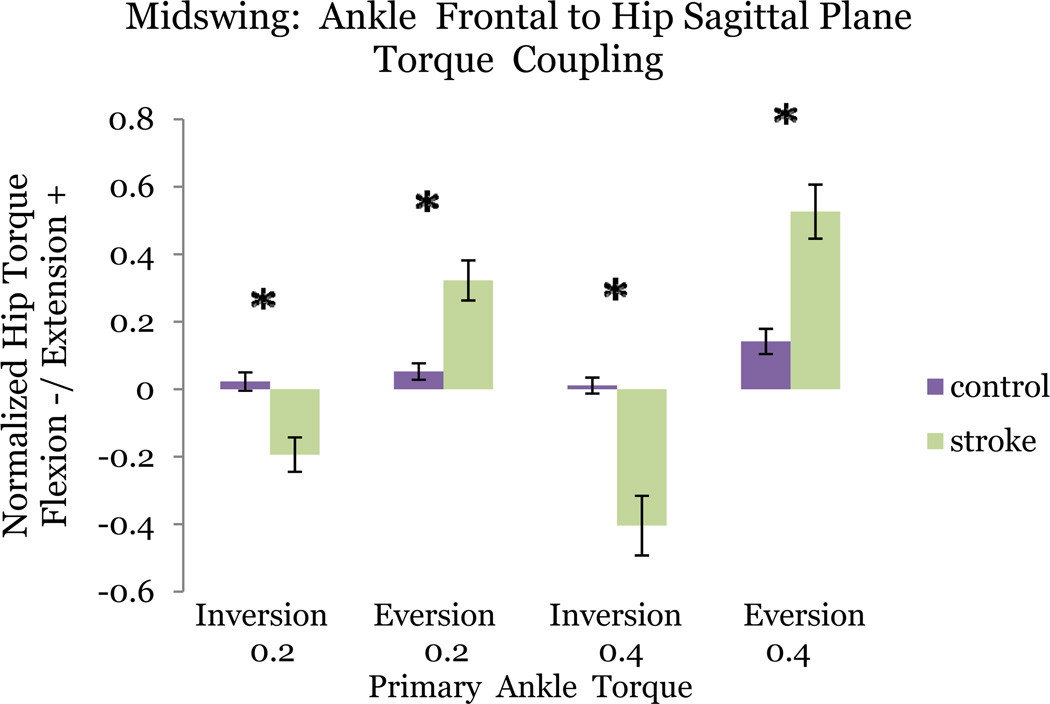Figure 5.
Coupling patterns independent of primary torque magnitude. Starred bars correspond to statistically significant difference (p < 0.05) in secondary torque production between stroke and control subjects. Two examples of torque coupling patterns that increase with target torque magnitude are shown for the midswing posture: primary ankle inversion coupled with secondary hip flexion, and primary ankle eversion coupled with secondary hip extension.

